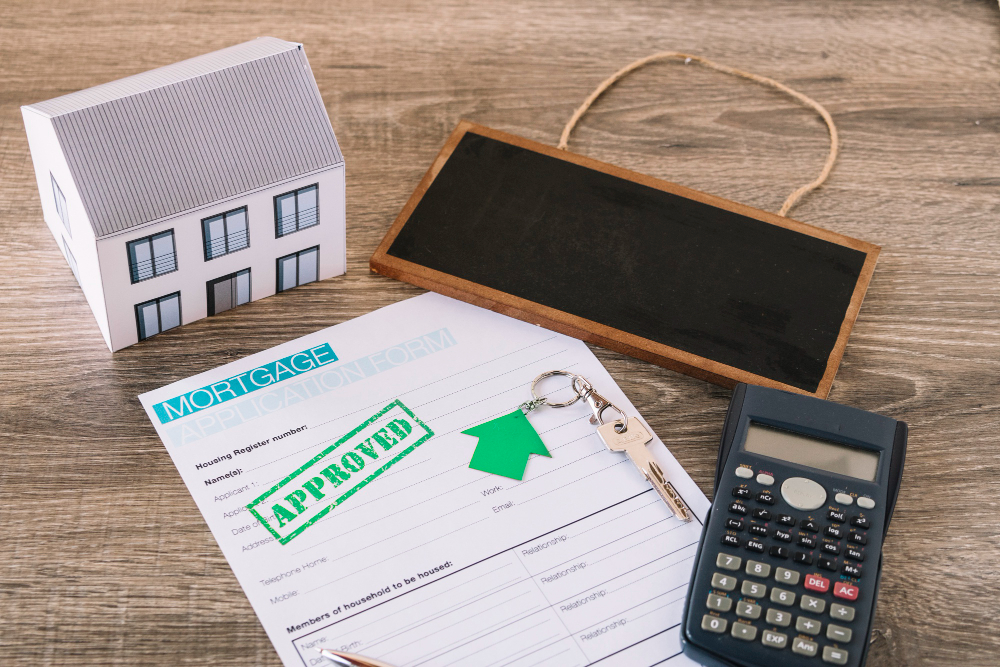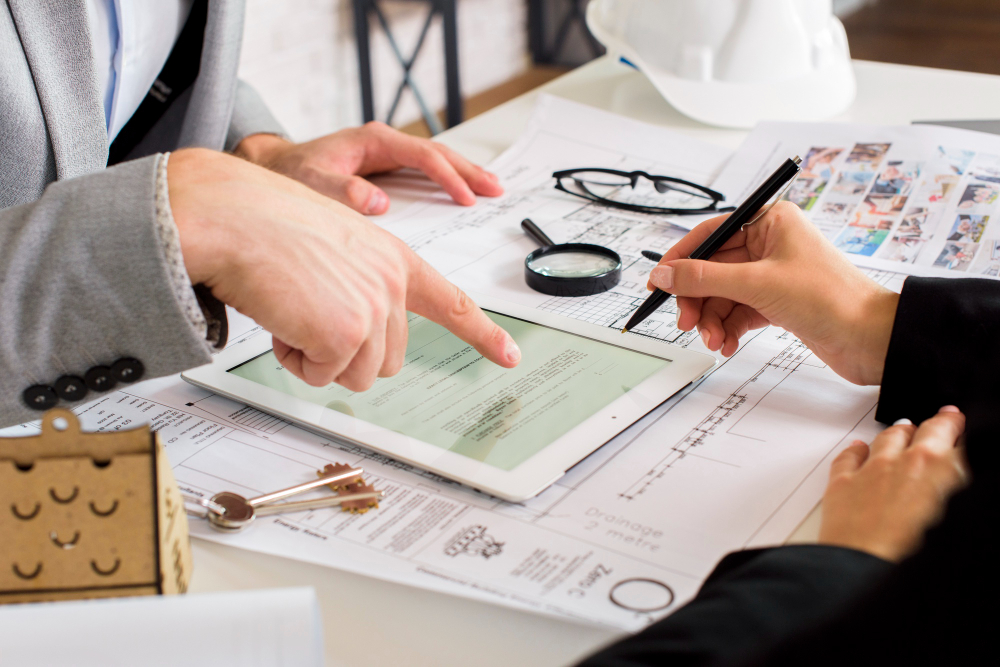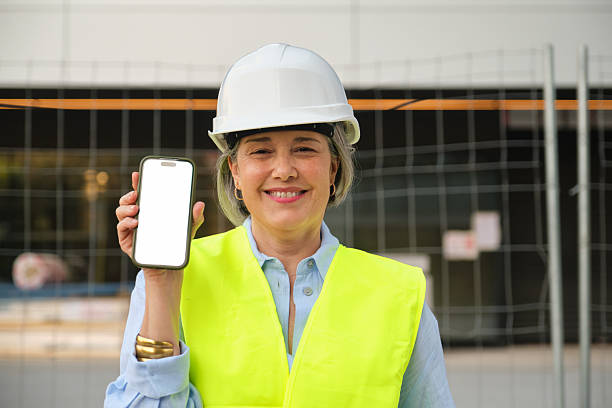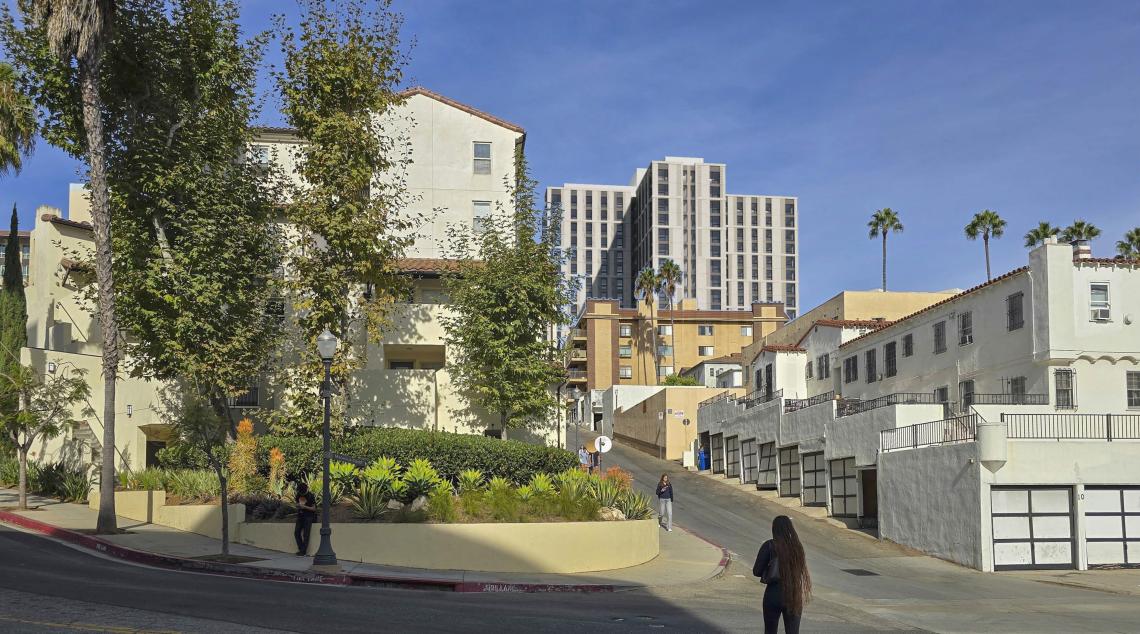Step-by-Step Guide to Community Outreach for Development Projects
When planning a development project, it’s easy to focus on design, financing, or permits. But one step that often gets overlooked can make or break your timeline: community outreach.
Table of Contents
ToggleGood outreach isn’t just a formality. It helps neighbors understand your project and builds trust with local agencies. In a city like Los Angeles, engaging the community is essential—not optional.
At JDJ Consulting Group, we’ve seen how effective outreach can save months of time and thousands in costs. This guide walks you through a step-by-step approach to community outreach for development projects in LA. It helps you address concerns, and keep your project moving smoothly from start to finish.
✨ Outreach Snapshot
Understanding the Role of Community Outreach in Development
Community outreach in real estate is about communication and transparency. It’s the process of listening to residents and organizations to understand their concerns.
Community Feedback Quiz 📝
Gather preliminary insights from your community in a simple, interactive way.
What Is Community Outreach in Real Estate Projects?
Outreach is the bridge between developers and the community. It involves holding meetings, sharing plans, gathering feedback, and making adjustments when needed. The goal is not just to inform but to collaborate—so residents feel included rather than ignored.
Why Community Engagement Can Make or Break a Project
When neighbors feel blindsided by a project, they often push back—through appeals, lawsuits, or public opposition. That can add months or even years to your timeline. By engaging early:
- Approvals move faster because agencies see community support.
- Costs stay lower by avoiding legal fights and redesigns.
- Trust grows between developers and residents, making future projects easier.
Strong community outreach doesn’t end all conflict, but it reduces resistance and builds goodwill.
Preparing for Community Outreach
The best outreach starts before the first public meeting. Preparation ensures you understand who you’re engaging with, what you want to achieve, and how to deliver your message clearly.
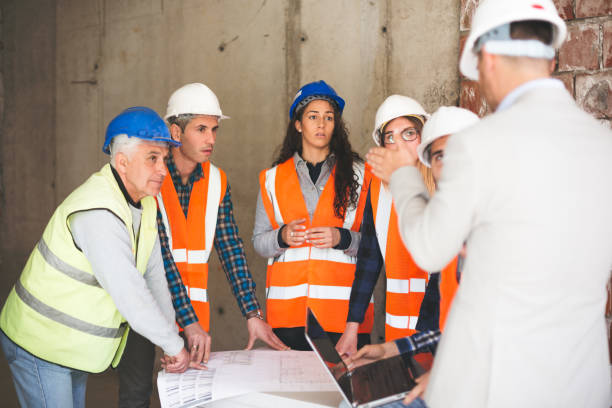
Research the Community Landscape Before Engagement
Every neighborhood has its own history and priorities. Before stepping into a meeting, research:
- Local neighborhood councils and homeowner associations (HOAs).
- Past development projects in the area and how they were received.
- Sensitive issues like traffic, parking, noise, or environmental concerns.
This background helps you anticipate questions and avoid missteps.
Set Clear Goals for Outreach
Outreach without goals can waste time. Decide early whether you want to:
- Gain support for entitlements and permits.
- Educate the community about project benefits.
- Collect input that may shape final design decisions.
Align these goals with your project timeline so outreach supports approvals, not delays them.
Assemble the Right Outreach Team
Outreach works best when the right people are in the room. A strong team may include:
- Developers and project managers to explain vision and details.
- Consultants and entitlement specialists to handle technical or regulatory questions.
- Community liaisons or PR experts who understand how to communicate effectively.
In Los Angeles, having consultants who know local agencies and councils—can make outreach much smoother.
Major Steps of Community Outreach
1st Step: Identify and Map Stakeholders
The first step in community outreach is figuring out who needs to be involved. Stakeholders can vary from one neighborhood to another. However, they usually include residents, businesses, local organizations, and government representatives.
How to Identify Stakeholders
Start by mapping out:
- Nearby residents who may be affected by construction, traffic, or design.
- Local businesses that could benefit or feel impacted.
- Neighborhood councils and HOAs who often act as the voice of the community.
- City officials or planning staff who will review approvals.
- Interest groups focused on issues like traffic, environment, or historic preservation.
By mapping these groups early, you avoid surprises and show that you respect all voices in the process.
🧮 Outreach Estimator
Estimate outreach time & budget. (Demo formula — adapt to real rates.)
Formula (demo): weeks = ceil( (units * 0.25) * intensity ); cost = weeks * 40 * rate * intensity.
Sample data source: JDJ internal project averages (demo). Replace with your project data.
2nd Step: Develop a Strategic Outreach Plan
Once stakeholders are mapped, create a structured plan. Outreach works best when it’s proactive and scheduled—not rushed at the last minute.
Elements of an Effective Outreach Plan
Your plan should cover:
- Timeline – When to hold meetings, share updates, and gather feedback.
- Methods – Decide whether outreach will include in-person meetings, online sessions, flyers, or mailers.
- Messaging – Prepare clear material that explains project’s benefits and address likely concerns.
- Follow-up – Document feedback and communicate how it was considered in the project.
A strong plan shows the community you are organized, transparent, and serious about collaboration.
3rd Step: Create Messaging That Connects
The way you explain your project matters as much as the details themselves. Communities want to know why a project is needed and how it benefits them.
Tips for Building Effective Messaging
- Speak simply. Avoid technical jargon—use plain language that anyone can follow.
- Show value. Highlight community benefits like jobs, housing, improved infrastructure, or beautification.
- Address concerns upfront. If traffic, parking, or noise will change, acknowledge it and explain solutions.
- Use visuals. Renderings, maps, and diagrams make it easier for residents to understand.
4th Step: Host Inclusive Community Meetings
Once your plan and messaging are ready, the next step is to bring people together. Hosting a meeting—whether in person or virtual—gives stakeholders a chance to learn and share their thoughts.
Best Practices for Community Meetings
- Choose the right location. Pick a space that is central, accessible, and welcoming.
- Offer multiple formats. Provide both in-person and online options when possible.
- Keep the agenda focused. Share key details without overwhelming the audience.
- Encourage open dialogue. Allow questions, but guide the conversation to stay productive.
- Document everything. Take notes or record sessions so feedback isn’t lost.
Meetings that feel open and respectful build trust, even if there are disagreements.
5th Step: Collect and Organize Feedback
Gathering feedback is not just about listening—it’s about recording and analyzing what people say so it informs the project.
Ways to Collect Feedback
- Surveys: Online or paper surveys let people share input in detail.
- Comment cards: Useful for in-person meetings where not everyone wants to speak.
- Dedicated email or website form: Makes it easy to track responses.
- One-on-one conversations: Sometimes the best feedback comes from personal follow-up.
Organizing Feedback
- Group comments by theme (traffic, design, environment, affordability).
- Track how often each concern comes up.
- Share a summary back with the community to show you are listening.
This step signals transparency and positions you as a partner, not just a developer.
📍 Community Outreach Flow
Quick view of the outreach steps.
Source (sample data/structure): JDJ Consulting Group outreach framework (2025). Replace with project-specific source as required.
6th Step: Adapt Project Plans Based on Input
The strongest outreach processes don’t just collect feedback—they use it. Adjusting your project to reflect reasonable concerns shows that you value the community’s role.
Examples of Adaptation
- Redesigning traffic flow to reduce congestion.
- Adding landscaping or buffers to improve neighborhood fit.
- Adjusting building height or placement to protect views.
- Creating a community benefit agreement (such as funding local improvements).
Even small changes can turn opponents into supporters if they see their input respected.
7th Step: Build Long-Term Community Relationships
Community outreach should not stop once approvals are secured. Development projects often take months or years. Thus, maintaining positive relationships ensures smoother progress.
Ways to Build Lasting Connections
- Regular updates: Send newsletters or emails with construction milestones.
- Community liaisons: Assign a contact person for questions or issues.
- Ongoing meetings: Hold occasional check-ins to share progress and listen to new concerns.
- Support local initiatives: Sponsor neighborhood events or partner with nonprofits.
By investing in relationships, developers show commitment beyond the project itself.
8th Step: Monitor and Report on Outreach Progress
Transparency builds trust. Developers should not only track their outreach efforts but also report results back to the community.
What to Monitor
- Number of meetings held and participants engaged.
- Types of feedback received and how it was addressed.
- Adjustments made to project plans based on community input.
- Commitments fulfilled (e.g., traffic improvements, landscaping).
Reporting Options
- Project website with regular updates.
- Community newsletters.
- Public presentations at city or neighborhood council meetings.
Tracking and reporting makes stakeholders feel heard and keeps everyone accountable.
Case Study: How Proactive Outreach Saved a Los Angeles Project
A developer in Los Angeles faced strong opposition from a neighborhood council over traffic concerns. Instead of pushing ahead, the developer engaged JDJ Consulting Group to guide outreach.
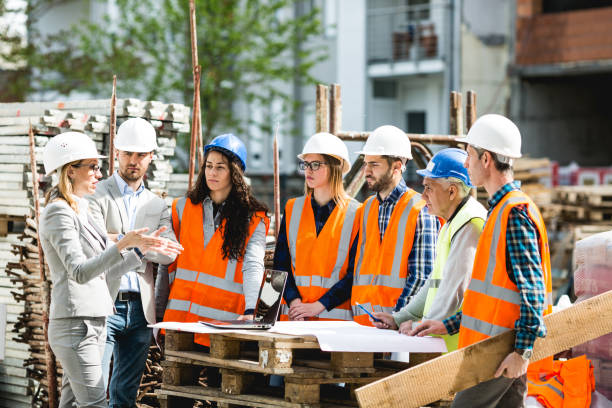
- We mapped all stakeholders and identified traffic as the core issue.
- Hosted two open forums where residents voiced frustrations.
- Adjusted the site plan to include new traffic-calming measures.
- Shared changes back with the community in follow-up sessions.
Result: The project won council support, avoided costly delays, and built goodwill with the neighborhood.
Table: Strong vs. Weak Community Outreach
| Strong Outreach Practices | Weak Outreach Practices |
| Stakeholders mapped early | Stakeholders identified late or overlooked |
| Clear, simple messaging | Overly technical explanations |
| Meetings scheduled with notice | Surprise or last-minute meetings |
| Feedback collected and summarized | Feedback ignored or untracked |
| Adjustments made to project | No changes despite concerns |
| Regular progress updates | Silence after initial meetings |
Conclusion
Community outreach is not just a formality. When done well, it lowers opposition, gains support, and helps avoid delays.
In Los Angeles, good outreach can be the difference between a stalled project and a timely process.
Take the first step toward smoother approvals and stronger community relationships. Contact JDJ Consulting Group today and ensure your project starts on the right path.
📅 Outreach Timeline
Sample schedule to align outreach with approvals.
Sample durations. Source: Example JDJ outreach schedules based on recent LA projects (2023–2025 averages).
FAQs: Community Outreach for Development Projects
1. What is community outreach in real estate development?
Community outreach is the process of engaging residents and local groups to discuss a proposed project. It involves sharing plans, listening to feedback, and making adjustments to build trust.
2. Why is community outreach important in Los Angeles projects?
In Los Angeles, neighborhood councils and community groups strongly influence approvals. Outreach helps avoid delays, lawsuits, and redesigns by addressing concerns before they escalate.
3. How can community outreach save time in development?
By resolving issues early and building public support, outreach prevents lengthy appeals.
4. Does community outreach reduce project costs?
Yes. Strong outreach avoids legal disputes, redesigns, and financing delays. It also lowers holding costs by helping projects move through the approval process faster.
5. When should community outreach begin?
Outreach should start before the first permit applications are filed. Early engagement builds trust and ensures that feedback can shape the project in meaningful ways.
6. Who are the key stakeholders in community outreach?
Stakeholders typically include:
- Nearby residents.
- Local businesses.
- Homeowner associations (HOAs) and neighborhood councils.
- City planning staff and elected officials.
- Advocacy groups focused on traffic, environment, or historic preservation.
7. What happens if a developer skips community outreach?
Skipping outreach often leads to strong opposition, public protests, appeals, or lawsuits. These conflicts can delay approvals and significantly increase costs.
8. What are the steps of effective community outreach?
The process includes stakeholder mapping. Also, developing a strategic outreach plan, preparing messaging, and hosting inclusive meetings. Likewise, collecting feedback, adapting project plans, maintaining relationships, and reporting progress.
9. How can developers identify the right stakeholders?
Developers should map residents, businesses, and advocacy groups within the project area. Reviewing past developments in the neighborhood also reveals potential allies or opponents.
10. What makes messaging effective during outreach?
Messaging works best when it’s simple, transparent, and visual. It should highlight community benefits, and avoid technical jargon that confuses residents.
📣 Feedback Themes
Sample breakdown of common themes heard in outreach.
Sample data: Traffic 32%, Parking 22%, Design 18%, Environment 14%, Other 14%. Source (demo): Aggregated JDJ outreach comment coding (2023–2025 sample).
11. How do public meetings support community engagement?
Meetings give residents a platform to learn, ask questions, and voice concerns. When managed well, they build trust and prove the developer’s commitment to transparency.
12. What are the best practices for hosting community meetings?
- Choose central and accessible venues.
- Offer both in-person and virtual options.
- Keep agendas focused and easy to follow.
- Document all feedback for transparency.
13. How should developers collect community feedback?
Developers can use surveys, comment cards, dedicated email addresses, and one-on-one conversations. Grouping responses by theme makes it easier to analyze and address concerns.
14. Should developers adapt projects based on community feedback?
Yes. Adjusting plans shows respect for community input and can turn opposition into support.
15. How can developers maintain community relationships after approvals?
Developers should send updates, assign a liaison, and hold occasional check-ins. This keeps relationships positive throughout construction.
16. How do developers report progress back to the community?
Progress can be shared through project websites, or presentations at neighborhood council meetings. Reporting shows accountability and builds trust.
17. What are common mistakes in community outreach?
- Ignoring key stakeholders.
- Using overly technical messaging.
- Holding surprise or last-minute meetings.
- Collecting feedback but failing to act on it.
- Stopping outreach once approvals are secured.
18. Can community outreach improve chances of approval?
Yes. Agencies often approve projects more quickly when they see strong community support. Outreach demonstrates responsibility and reduces political pressure.
19. How can JDJ Consulting Group help with community outreach?
JDJ guides developers through stakeholder mapping, messaging, meeting facilitation, and feedback management. Their expertise in Los Angeles helps projects move smoothly through approvals.
20. What is the long-term value of community outreach?
Beyond one project, strong outreach builds goodwill with residents and local agencies. This makes future developments easier, faster, and less expensive to entitle.

